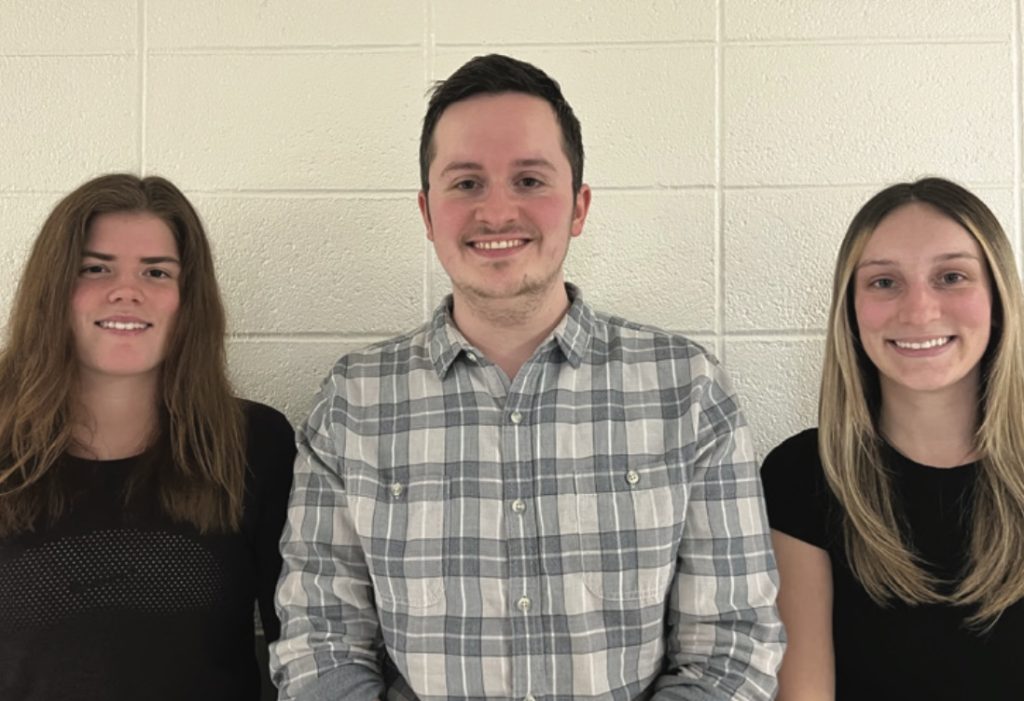Course Description
MSE 466 is a senior level course for Materials Science & Engineering majors, providing students with a team- based capstone design experience. A major aspect of this course is to have students apply their course-learned background knowledge and skills in materials science and other disciplines to real-life design problems.
A failure analysis investigation (FAI) fits this context. Failures are a major motivating factor for promoting more innovative designs or design changes. A failure analysis investigation provides a unique platform to design and to solve real-world engineering problems via systematic engineering approaches. By focusing on
a specific design failure, the student teams learn how to confront an open-ended problem that requires them to develop a strategic design plan and to execute the methodology for assessing how and why the failure occurred. The analysis is conducted using established investigative procedures and constraints for conducting failure analysis investigation. This semester, there are six 3-member teams carrying out investigations on real materials failures.
Team Name: Break Check
Project Name: Examination of a Failed Brake Pipe/Junction of a 2006 Buick Rendezvous CXL
Time: 8:30 a.m.
In a hydraulic automotive braking system, foot pressure on the brake pedal is transferred to the brakes through the brake lines. This system uses brake fluid to apply pressure onto the brake calipers which in turn applies friction between the rotor and brake pads, slowing and then stopping the vehicle when the calipers clamp down on the brakes. When the brake line fails, the brake fluid cannot provide this pressure
to stop the vehicle. The brake line on a 2006 Buick Rendezvous CXL experienced a rupture at the junction leading to the rear left wheel brake system. The rupture and the surrounding area were thoroughly documented, and an assortment of analysis techniques were utilized to determine the cause of the rupture. These techniques included stereomicroscopy, metallography, chemical analysis and scanning electron microscopy (SEM). The information gathered from these analysis methods revealed a better understanding of what caused the brake line to rupture.
Team Name: Optical Zyllusion
Project Name: Examining the Cellulose Acetate (Zylonite) Fracture of Glass Frames
Time: 8:30 a.m.
For the around 75% of the world population that wears corrective lenses, any failure
in their glasses can be devastating. The price of replacing them aside, being unable to see clearly severely limits the capability of an individual with bad vision to interact
with the world around them. A pair of glasses was broken by a young technician in an optometrist’s office while they were attempting to fix an unrelated hinge failure. Made of cellulose acetate, also known as zylonite within the optical industry, the failure of these frames was unexpected, as the material is considered to be quite durable within the industry. To determine the cause of failure of these frames, a variety of destructive and non-destructive tests were performed by the team to gain understanding of both the characteristics of the material, and what other factors may have been in play to cause this catastrophic fracture.
Team Name: 90-Degree Dream Team
Project Name: Failure Analysis of a Metal Forming Die
Time: 9:30 a.m.
A progressive die at Forward Metal Craft was used to bend a thin piece of metal ninety degrees. A component of the die broke while in use on January 2, 2023. Fractures occurred in multiple locations. One fracture occurred across the body of the specimen. The other fracture occurred perpendicular to the threaded hole, which was used to attach the die to the tool head. The fractures and the adjoining areas were meticulously recorded using macroscopic photos of differing angles and lighting conditions. A variety of analysis methods such as replication, stereomicroscopy, scanning electron microscopy (SEM), chemical analysis, hardness testing, finite element analysis (FEA), and metallography were employed to gain a deeper insight into the reason for failure.
Team Name: The Twisters
Project Name: Evaluating the Failure of a 5:1 Motor Speed Reducer
Time: 10:00 a.m.
A Wittenstein NP 025 Standard 5:1 speed reducer inside a VX4000 3D sand printer, used to slow mechanical motors, was found to have failed in torsion, causing manufacturing downtime and loss of revenue. The center shaft of the speed reducer failed, resulting in a fracture. Initial inspection showed the fracture surface to be circular in cross-section, with concentric rings. It had a slightly raised center that dips down radially moving further out from the center, with a slightly raised outer edge. Cracks and relatively large pits were also seen surrounding the edge of the fracture surface. To identify what caused the failure, a variety of testing methods were used. Stereomicroscopy and scanning electron microscopy (SEM) were used to analyze the fracture surface and identify the failure mode. Chemical analysis
was used to characterize the elemental makeup. Hardness testing was used to indicate the material properties while optical metallography was used to assess the microstructure. Finite element analysis (FEA) was used to assess the areas with maximum stress and displacement on the part. Comparative analysis was also performed with similarly failed parts.
Team Name: The Spraying Squad
Project Name: Deburring Water Nozzle Failure Analysis
Time: 10:30 a.m.
A failed water nozzle used in an industrial deburring machine was selected for further study. Pressurized water was pumped through the nozzle in order to remove burrs from machined aluminum parts during regular operation. This particular nozzle design was known to fail frequently and was subject to past concerns
due to its relatively high price. Little was initially known about the part and an investigation into the composition, the stress state at the time of failure, and the design of the part was in order. The team tasked with the failure analysis of the nozzle, conducted scanning electron microscopy (SEM) and chemical analysis, among other tests, to determine the root cause of the failure in question.
Team Name: Kelvin & The Chipmunks
Project Name: Failure Analysis of Fiber Optic Cables
Time: 11:00 a.m.
Fiber optic glass has revolutionized internet speed and reliability over the course of the last 30 years. Following the two hottest weeks of the 2022 Michigan summer, Verizon Wireless and Sparrow Hospital reported network outages. Further investigation revealed catastrophic damage to 12 fibers and further damage to the entire 144-count fiber optic cable as well as evidence of possible animal tampering. After initially documenting the fracture surfaces using photography and optical microscopy, the fracture surfaces and surrounding area of the fiber optic cables were thoroughly analyzed using various analysis techniques, including tensile testing, three-point bending test, chemical analysis, and scanning electron microscopy (SEM). Details surrounding the fracture of the fiber optic cable revealed a more finalized explanation of what led to the fracture.








